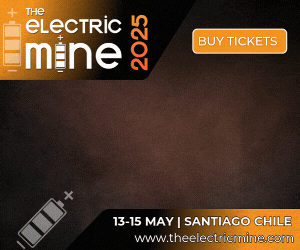
The study underscores a notable lack of standardized reporting for local mining purchases in Peru, particularly in the southern region, revealing a significant information gap. It analyzes data from four mining companies, emphasizing transparency in local acquisitions.
Emphasizing the pivotal role of purchasing goods and services in the governance of the mining industry, SAMMI - Andean Mining Cluster, in collaboration with Mining Shared Value, presented the document "Diagnosis of Access to Information on Mining Sector Procurements in Southern Peru." This pilot study, supported by MinSus, analyzes public information from four mining operations based on the Local Procurement Reporting Mechanism in the Mining Sector (LPRM) and gathers insights through focused interviews.
Over the past decade, there has been a noticeable trend towards strengthening backward linkages in the mining sector, with companies adopting new guidelines and tools for local procurement. In this context, initiatives such as the International Council on Mining and Metals (ICMM) advocate for companies to provide practical information to local suppliers, enabling them to effectively participate in procurement processes.
"In addition, mechanisms like the LPRM and the Extractive Industries Transparency Initiative (EITI) have promoted transparency and efforts to combat corruption," says Tatiana Alarcón, Director of Programs and Corporate Affairs at Mining Shared Value and co-author of the document. "This study underscores the need for a diagnosis of the state of procurement in the Peruvian mining sector, aiming to improve business practices, strengthen local actors, and prevent corruption – crucial actions for the sustainable development of the mining industry in Peru," Alarcón concludes.
Main Information Access Gaps in Peru
Among the key findings of the study are the limited public access to local supplier policies of mining companies, and the lack of adaptation of due diligence and anti-corruption policies to local territories. It also highlights the lack of standardization regarding the term "local," making it difficult to compare procurement figures between companies.
Additionally, challenges in bidding processes are identified, such as access barriers, lack of clarity in evaluation criteria, minimal feedback to unsuccessful bidders, and persistent mistrust by mining companies in the ability of local suppliers to meet industry standards. On the other hand, the high dependency of local suppliers on mining companies is identified as a weakness for collaboration opportunities.
The report also underscores the gender gap, with only 2 out of 23 interviewees (9%) being women. This figure aligns with female participation in the Peruvian mining sector according to data from the global report "Women and the Mine of the Future," highlighting persistent social, cultural, and economic barriers limiting their effective participation in the industry.
A revealing insight into this challenge is that, when requesting information on local suppliers for this study, 100% of the contacts provided by mining companies were male entrepreneurs. This finding emphasizes the importance of deeper understanding of these inequalities and the pursuit of strategies for overcoming them.
In response to these findings, the study proposes a series of recommendations aimed at governments, mining companies, and local suppliers, with the goal of promoting transparency, improving procurement practices, and fostering collaboration among sector actors. For more information on the study and its recommendations, the full report can be accessed here.




